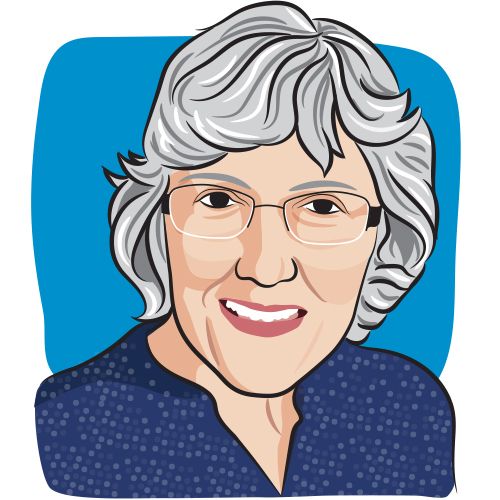My ‘Bag of Tricks’ Helps Overcome Fear During Stage 4 Ovarian Cancer
Ignoring fear and anxiety only allows them to grow until they explode into a full-blown anxiety attack. It’s okay to be scared about cancer progression.

I suffer from Other Shoe Disease (OSD). Never heard of it? I suspect many people living with late-stage cancer have it, even if they can’t put a name to their malaise. The primary symptom is an awful, sick feeling in the pit of my stomach as I wait for the other shoe to drop.
You know, the one that hits the floor with the thud of a combat boot when the CT scan (a machine that takes detailed pictures of the inside of the body) comes back showing progression. When you learn that you’re no longer in remission. That your treatment is no longer working. That you’re not eligible for another clinical trial. And so on. I experienced OSD frequently when I first entered treatment for stage 4 ovarian cancer in 2016. CT scan anxiety caused it first. Waiting for the results particularly. Then I danced with NED — short for no evidence of disease. I kept waiting to miss a step in this intricate dance we cancer patients do. Sure enough, the other shoe dropped with a boom eleven months later. The disease had returned.
Now, eight years later, OSD is my constant companion. My current clinical trial drug has been working for 16 months — the longest I’ve been NED since my diagnosis. Still, I struggle with thoughts of “what if” and “then what,” instead of simply enjoying the blessing of still being here, still writing novels and still playing with my grandkids. Why? The clinical trial sponsor ended the study early. I’m the only patient left in it. So far, they’re still allowing me to take the drug. But my mind insists on latching on to “what if they decide to stop manufacturing the pills?” Or “what if they won’t pay for the scans anymore?” Or “what if there’s progression?”
With the experience I’ve garnered over the years, I know it’s only a matter of time. The shoe will drop. That’s the nature of metastatic ovarian cancer. The question is how do I keep OSD from spoiling my days in the meantime? I have accumulated a bag of tricks.
- When OSD thoughts niggle at my brain, I go to ClinicalTrials.gov and look for trials sponsored by my phase 1 clinical trial clinic. I know there are two or three potential trials my oncologist has pinpointed, should I have to switch to a new one. This reminds me that I still have options, as he frequently likes to tell me.
- When I start having conversations in my head on repeat, planning what I’ll do and say when the shoe drops, I replace the imaginary dialogue with a real list of blessings. I have so many, starting with simply being here when so many other women diagnosed in 2016 are not.
- Digging into my full-time job of writing fiction helps. That includes doing my share of the marketing and promotion. When my mind is occupied, I have less time to pay attention to OSD symptoms.
- I say my prayers and ask my Sunday school class to pray for me. These are some powerful prayer warriors.
- Allowing myself to acknowledge my fear and anxiety is important. Ignoring and burying these feelings only allows them to grow until they explode into a full-blown anxiety attack. It’s okay to be scared. Anyone in her right mind would be anxious. I give myself kudos for recognizing it and then moving on.
- Sometimes the only answer is to eat a piece of pie, drink some iced tea and lose myself in reading a good novel that transports me to another place and time. Escaping, even for a few hours, is allowed.
Many days I still feel OSD sitting on my shoulder, the wind blowing its stinky foot odor in my face. By using one of the tricks in my bag, I can flick it off so I can enjoy the sunshine and the company of my baby grandson. Life is good again.
For more news on cancer updates, research and education, don’t forget to subscribe to CURE®’s newsletters here.